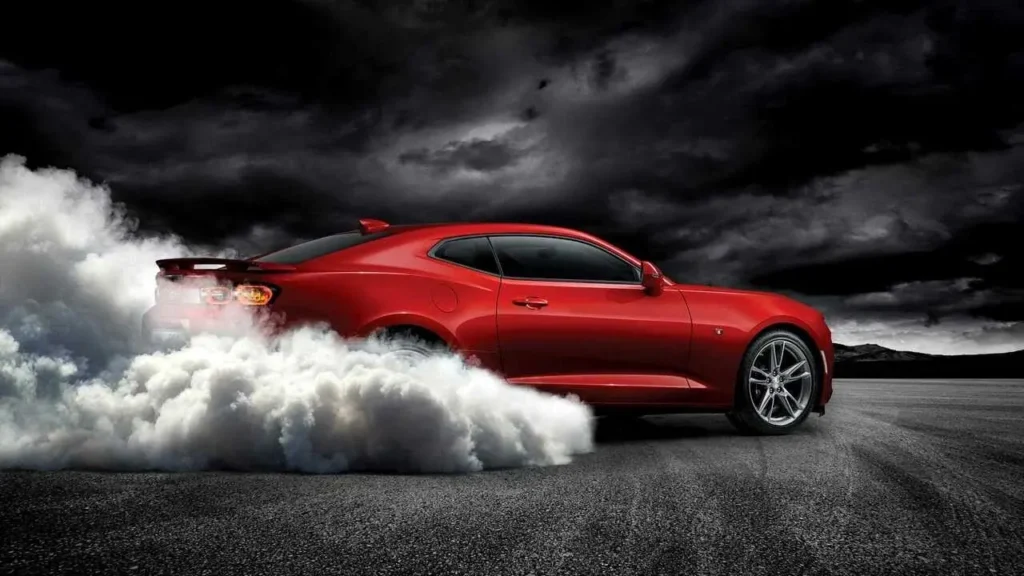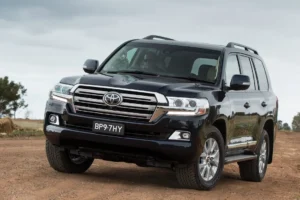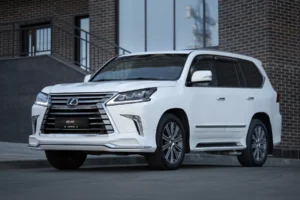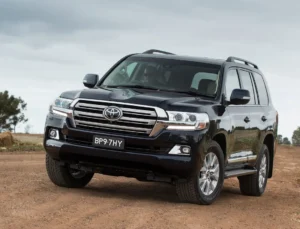Table of Contents
You’ve finally decided to buy a used car as an economical solution that fits your budget. At first, excitement fills your heart because you’ve found the right car at a reasonable price. But soon, anxiety starts to creep in, and you begin wondering: How can I be sure this car is in good condition? How can I maintain it for as long as possible without incurring expensive maintenance costs?
In fact, how to maintain a used car properly is one of the biggest concerns for many people, especially those buying used cars for the first time. After making the purchase decision, a new journey begins, filled with care and attention to ensure the car stays in excellent condition and performs effectively for as long as possible.
In this article, we will guide you through how to maintain a used car at the lowest costs. We will take you step by step through the inspection process before purchase, then provide you with practical tips after the purchase to ensure your car stays in top condition for the longest time. Whether you’re a beginner or have some experience, you’ll find everything you need to get the most out of your used car.
What to Look for When Buying a Used Car
1. Overall Condition
The car’s condition is one of the most critical factors to consider when purchasing a used vehicle. It reflects how well the previous owner maintained it and significantly impacts its value. Check hard-to-reach areas for signs of wear and rust, such as wheel arches and door edges. The paint should be in good condition without any bubbles, which could indicate rust underneath. Inside, the upholstery should be clean, free of stains, and without tears.
2. Mileage
Vehicles with higher mileage tend to have a lower resale value than those with fewer miles, as some components may experience excessive wear and require replacement. Low-mileage cars are often more desirable because they generally remain in better condition for longer.
However, the key factor is how well the previous owner maintained the car, regardless of the mileage. For example, if you’re looking at a 2018 Honda Civic with 50,000 miles, make sure it has a complete service history to ensure it has been well-maintained.
3. Vehicle History
A car’s service history is a crucial indicator of its maintenance. Every vehicle should undergo regular servicing, and a well-documented service record from a certified workshop or dealership proves that the car has been properly cared for. Gaps in service history may suggest underlying issues that have not been addressed.
4. Professional Inspection
When buying from an authorized dealership, you can rest assured that the car has undergone comprehensive inspections by trained professionals before being put up for sale. However, if purchasing from a private seller, there is no such guarantee.
To avoid potential risks, consider having the car checked by a certified mechanic before finalizing the purchase. For example, if you’re thinking about buying a 2019 Ford Escape from a private seller, it’s a good idea to have a mechanic inspect it for any hidden issues.
5. Trade-In Financing Options
If you already own a vehicle, some dealerships offer trade-in options that can reduce the cost of your new purchase. This can be a convenient way to finance your next car while upgrading to a newer or better-maintained model.
6. Test Drive the Car
Whenever possible, take the car for a test drive before making a decision. Pay attention to how it handles, any unusual noises, and overall driving comfort. This step can help identify hidden mechanical issues that may not be apparent during a visual inspection.

What to Do After Buying a Used Car?
Once you’ve completed the purchase, your responsibilities shift to maintaining the car and ensuring it remains in good condition for as long as possible. In this context, how to maintain a used car becomes crucial, as the simple steps you follow after purchase will help keep the car performing well and reduce the likelihood of costly repairs.
1. Inspect the Car’s Condition Thoroughly
First, conduct a thorough inspection of the car. Check the condition of the engine, brakes, tires, and other key components. If you notice any problems, address them immediately.
2. Check Fluid Levels
Ensure that the oil, coolant, brake fluid, and windshield washer fluid are at the required levels. This will help prevent performance issues.
3. Replace Small Damaged Parts
Even if the car appears to be in good condition, some parts like filters or light bulbs may need to be replaced. Ensure everything is functioning as it should.
4. Inspect the Exterior and Interior
Inspect the car carefully from both the inside and outside. Make sure there is no rust or wear on the body and check for any issues with the seats or internal systems like air conditioning.
5. Initial Service Check
Take the car to a specialist workshop for a comprehensive inspection. Technicians can spot issues that may not be visible to the untrained eye.
6. Maintain the Air Conditioning System
Check the functionality of the air conditioning and heating system. If there are any problems with the system, make sure to repair them.
7. Registration and Insurance
Ensure the car is properly registered with the relevant authorities and update the insurance to protect yourself in case of an accident.
8. Set a Regular Maintenance Plan
Create a routine maintenance schedule that includes regular checks for oil, tires, brakes, and electrical systems. This plan will ensure the car runs efficiently for a longer period.
How to Maintain a Used Car After Purchase
Maintaining a used car is essential to ensure it continues to perform well and avoids expensive repairs down the road. While it may seem daunting at first, by following a few simple steps, you can ensure your car stays in top shape for years to come. If you’ve purchased a used car, it’s important to understand how to maintain a used car to prevent future problems and preserve its value.
1- Regular Fluid Checks
Make sure to regularly check key fluids such as engine oil, coolant, and brake fluid. These should always be at the right levels to ensure the car’s proper functioning.
- Engine Oil: Change it every 5,000 to 8,000 km.
- Coolant: Check and refill as needed to avoid engine overheating.
2- Replace Filters
Ensure you replace filters regularly, such as the air filter that protects the engine from dirt and dust. It’s recommended to replace the filter annually or every 10,000 to 20,000 km.
3- Clean or Replace Injectors
Cleaning fuel injectors helps restore engine power. Clean them every 65,000 km to prevent decreased performance and higher fuel consumption.
4- Change Oil and Filter
Changing the oil and filter regularly helps keep the engine running smoothly. Be sure to use the correct oil as per the owner’s manual.
5- Inspect Brakes
Check the brakes regularly. If you notice any unusual noises or poor performance, have them checked immediately.
6- Clean the Cooling System
The cooling system needs to be cleaned periodically, especially in summer. Make sure to clean the radiator and change the coolant fluid regularly.
7- Care for the Suspension and Brakes
The suspension system ensures smooth driving. Check it when necessary to avoid any issues with driving or vibrations.
8- Check the Battery
Inspect the battery regularly, especially if it’s old. Look for any corrosion or leaks and replace it if necessary.

What is the Regular Maintenance Schedule?
If you’ve decided to own a used car, or even a new one, regular maintenance is one of the most important factors that will help your vehicle remain efficient for years to come. Proper maintenance ensures that your car runs smoothly, lasts longer, and remains safe to drive. Many car owners wonder what the ideal maintenance schedule looks like, and how to organize it. Let’s break it down step by step to help you keep your car in top condition.
Daily Maintenance
Even though daily maintenance doesn’t take much time, it’s essential to check your vehicle every day. A quick daily check-up can help identify minor issues before they turn into bigger problems. Here’s what you should check every day:
- Tires: Ensure they are properly inflated and check for any visible damage or debris.
- Brakes: Listen for any unusual sounds when applying the brakes and check the brake fluid level.
- Lights: Make sure headlights, taillights, and brake lights are functioning properly.
- Windshield: Ensure there are no cracks or damage and that wipers are working correctly.
- Oil Level: Open the hood and check the oil level to ensure there are no leaks and the oil is at an optimal level.
This quick check-up usually takes less than 30 seconds but is a crucial part of maintaining safety, especially for those who drive frequently.
Monthly Maintenance
If you’re unable to do daily checks, it’s a good idea to perform a more detailed check once a month. This monthly maintenance gives you a better understanding of your car’s overall condition. The monthly check should include:
- Tire Pressure: Use an air pressure gauge to ensure your tires are inflated to the recommended pressure levels.
- Windshield Wipers: Check the condition of the wipers and make sure they’re free of cracks or wear.
- Lights: Verify that all lights (headlights, brake lights, turn signals) are functioning properly.
- Visibility Issues: Ensure there’s nothing obstructing your visibility, such as dirty or damaged mirrors or windows.
This is a more thorough inspection that can prevent problems related to visibility and tire safety.
Annual Maintenance
Annual maintenance is a bit more detailed and helps to ensure that your car is free from significant issues. Here are some important tasks that should be completed every year:
- AC Filter and Gas Pressure: Check the air conditioning filter and the gas pressure. Replace them if necessary to avoid inefficiency or failure.
- Tire Inspection: Examine the tires for any signs of uneven wear or damage. Tires should be rotated if needed.
- Oil Change: If your car has traveled a significant distance, it’s essential to change the engine oil and filter to ensure the engine operates smoothly.
In conclusion, understanding how to maintain a used car is essential to keeping it in great condition for as long as possible. By following the regular maintenance schedule and performing inspections consistently, you can reduce future repair costs and ensure your car performs at its best. The more you take care of your car, the more you’ll enjoy driving it with confidence and safety.
Soum is always here to offer you the best tips for purchasing a used car and help you make the right decision by providing top-quality used cars from leading brands that meet your needs. We’re here to ensure your car-buying and maintenance experience is easy and worthwhile.
















